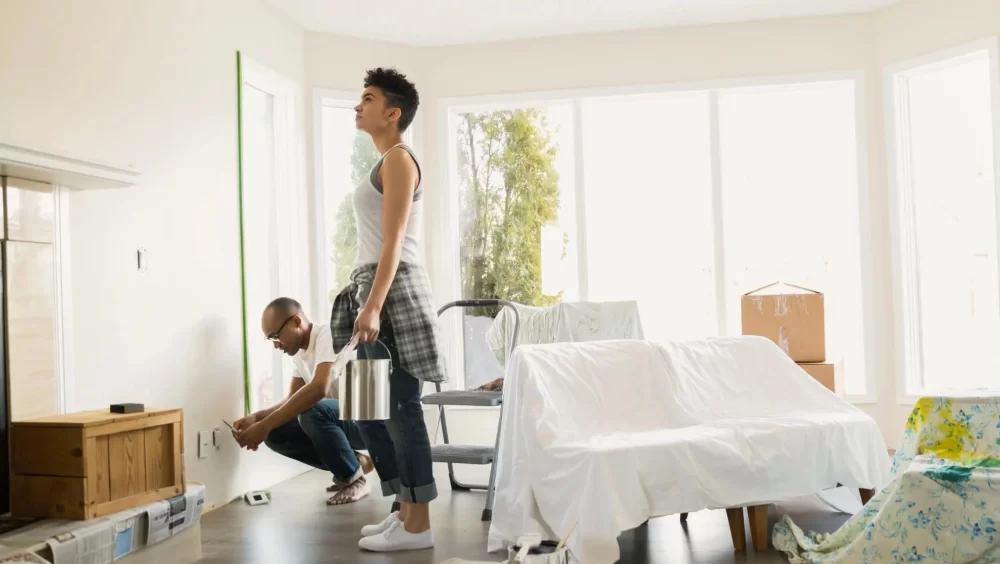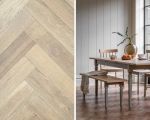
Finding the Perfect Paint Colors for Your Home Renovation
When I first started planning my home renovation, I didn’t realize just how important paint colors would be in shaping the look and feel of the entire space. I had a vague idea of what I wanted, but when I started researching and experimenting with different shades, I quickly realized how much thought and strategy went into choosing the perfect colors. In this article, I’ll share my experience of selecting the best paint colors for my renovation, the challenges I faced, and how you can avoid common mistakes to find the right hues for your own home.
1. The Impact of Color on Your Home’s Atmosphere
Before diving into color selection, it’s essential to understand how paint colors can influence the overall vibe of your home. I remember when I first moved into my house; the walls were all a dull beige, and the space felt cold and uninspiring. The moment I started painting, I realized just how much of a difference the right color could make. Colors are more than just aesthetics—they can affect how you feel in a room. Warm tones like reds and oranges can make a space feel cozy and inviting, while cool tones like blues and greens create a calming atmosphere.
For my living room, I wanted a color that would evoke a sense of calm and relaxation, so I went with a soft light blue. It turned out to be the perfect choice, making the room feel airy and spacious. On the other hand, for my dining room, I opted for a rich, deep burgundy, which added warmth and a touch of elegance. Understanding the emotional impact of color was crucial to creating the right atmosphere in each room of my home.
2. Consider the Room’s Size and Lighting
One of the biggest lessons I learned during my renovation was the importance of considering the size and lighting of each room before choosing a paint color. Small rooms can feel even more cramped with dark colors, while light shades can make a tiny room feel more expansive. When I was painting my bedroom, I realized the room was quite small, and using a dark shade would have made it feel even more enclosed. I opted for a soft gray, which brightened the space and made it feel more open and inviting.
Lighting plays a huge role in how paint colors appear in a room. Natural light will enhance certain tones, while artificial light can change how colors look. I spent time testing a few paint samples on the wall before making my final choice, and I was amazed at how the light in the room affected the shades. The key here is to test paint colors in different lighting conditions to ensure you get the result you want. If you’re unsure, it’s always a good idea to buy small sample cans and apply swatches on your wall to see how they look throughout the day.
3. How to Coordinate Paint Colors with Existing Decor
Another important factor to consider when choosing paint colors is how they will coordinate with the furniture, flooring, and decor already in your space. During my renovation, I wanted to make sure that the colors I selected would complement the hardwood floors in my living room and the neutral-toned furniture in my dining room. For this, I turned to the concept of color harmony, which involves selecting shades that work together to create a cohesive look.
For example, I chose a cool-toned blue for the living room to balance the warmth of the wooden floors, and for the dining room, I selected a muted olive green that complemented the neutral tones of the chairs and table. A great way to approach this is by starting with your existing furniture or accessories and choosing a color palette that either complements or contrasts them in a way that enhances the overall aesthetic.
4. Choosing Colors for Different Types of Rooms
Each room in your home serves a different purpose, and the colors you choose should reflect that. For me, this was especially important when I started renovating my kitchen and bathrooms. Kitchens tend to have a lot of stainless steel, white appliances, and bright surfaces, so I decided to choose a clean, crisp white to reflect light and keep the space looking fresh and modern. The bathroom was a different story; I wanted a calming, spa-like environment, so I chose a soft, muted blue-green that made the space feel peaceful and relaxing.
Living rooms and bedrooms, on the other hand, can handle more personality and warmth. For my bedroom, I went with a rich navy blue accent wall that complemented the neutral tones of the bedding and added a touch of drama to the space. The key here is to match the color to the function of the room: bright and energetic colors work well in kitchens or offices, while soft and calming hues are better suited for bedrooms and bathrooms.
5. Experiment with Accent Walls and Trim
One of the easiest ways to add a burst of color without overwhelming a space is through accent walls or colorful trim. I decided to create an accent wall in my living room to give it a sense of depth and visual interest. I chose a deep charcoal gray that contrasted beautifully with the lighter gray walls. It created a focal point and added character to an otherwise simple room.
For a more subtle approach, you could add colorful trim to doors, windows, or baseboards. I used a classic white trim throughout the house, which made the colors on the walls pop and gave the rooms a crisp, finished look. Accent walls and trim are an excellent way to incorporate bold colors without committing to painting the entire room in one shade.
6. Think About the Exterior: First Impressions Matter
While much of my focus during the renovation was on the interior, I also realized that the exterior of my home played a huge role in overall curb appeal. I wanted the house to have a modern yet timeless look, so I decided to go with a neutral, warm gray for the main body of the house and a crisp white for the trim. The color combination made the house look clean and sophisticated, while still feeling welcoming.
When choosing exterior colors, it’s important to think about how the house will blend in with the surrounding environment. For example, if your home is surrounded by lots of greenery, a deep green or earthy brown might blend in well. On the other hand, if your home is in a more urban setting, you might want to go for something more neutral or bold to make a statement. I highly recommend testing out exterior paint samples and observing how they look at different times of day to see how they change with the natural light.
7. Getting Inspiration from Paint Color Palettes
If you’re feeling overwhelmed by all the choices, you’re not alone. I spent hours browsing through color palettes before settling on the right ones. One of the best resources I found was online tools and paint apps that let you virtually try out different color combinations. Some brands even offer free color consultation services, which can help guide you in making the right decision based on your space and vision.
Additionally, home design magazines, Pinterest boards, and Instagram accounts dedicated to interior design provided a ton of inspiration. Don’t be afraid to draw from these sources to create your own unique color scheme. It’s always helpful to see how different colors work together in real homes, which can help you visualize what your renovation could look like once it’s complete.
Choosing the right paint colors for a renovation is an exciting process, but it can also be daunting. It requires careful thought, experimentation, and an understanding of how colors influence the mood and look of your home. By considering factors like room size, lighting, existing decor, and the purpose of each space, you’ll be able to select the perfect colors that make your home feel uniquely yours.
If you're looking for expert recommendations on color choices or want to connect with professional painters, be sure to visit Improvement. We offer personalized services to help you find the right colors and the best painters for your renovation project!








